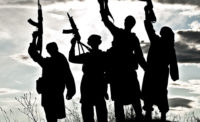Pride is an interesting thing. It can be good, especially when linked to confidence, competency, and ability. It can lead to esprit de corps. It can lead to excellence. But pride can also lead to arrogance. It can lead to conceit. It can lead to someone not listening to someone else regardless of logic and reason if only to spite them.
What does this have to do with safety?
Human interaction and communication is the cornerstone of safety. Hazards must be identified, hazard controls must be developed, controls must be trained and communicated, unsafe conditions must be communicated, and unsafe behaviors must be coached. If pride gets in the way of this – and it does – safety suffers. Unfortunately, it is human nature to defend one’s pride; if the defense of pride gets in the way of recognizing or controlling a hazard, someone might have a strong ego but remain exposed to hazards, or worse – expose others to hazards.
Case study –pride at work
A Registered Nurse has been in his role for 17 years. He is not only been awarded and recognized many times by his hospital, but also by the entire hospital system. He is not only considered a technical subject matter expert, but is also a supervisor on his unit and is responsible for the performances of other nurses. But this nurse’s unit has sustained a series of injuries and exposures over the past many years, a trend not acknowledged until a new safety manager was brought on board.
After coming aboard, the new safety manager began looking into the safety situation in the hospital system. After discussing the situation with individual hospital safety committees and leaders, it became evident that, instead of developing a hazard analysis and risk assessment so leaders and employees knew and understood what hazard areas apply to their work and the associated severity levels, the common sentiment was that the hazards were simply “the cost of doing business” and that injuries were not preventable.
Some hazards such as patient handling could even lead to patient safety issues. Some of the hazards such as occupational disease exposure could lead to cross-contamination issues and infection control challenges.
After all levels of the organization were included in the discussion, provided feedback and bought into the solutions, hazard analyses were developed and hazard controls were implemented. Even then, this nurse and the nurses on his unit were found to not utilize them. Even with patient handling equipment available, this nurse didn’t use it, even at the risk of his own safety and that of his patients and fellow employees. Leading indicators such as observations showed noncompliance with hazard control use while lagging indicators continued to show injury rates sustained or increased. Often, this nurse also refused to complete observation or inspections at all to participate in the safety program.
When the safety manager discussed these issues with this nurse and, eventually, his administrative leadership, the safety manager was barraged with comments referring to unavoidable hazards, equipment and PPE slowing them down and how the safety manager couldn’t understand nursing because he wasn’t a clinician.
The safety manager was told the nurses should simply be left alone to handle their business as they wanted to, even if it meant bodily fluid exposures, needlesticks, and back injuries. After all, he was told, it was Occupational Health and Safety’s job to “support them and help them after they were injured.”
Plus, he was told it was safety’s job to perform observations and that safety leadership “shouldn’t be punted to them.” After all, they stated, they had been doing their jobs for many years and didn’t need somebody coming in and telling them any different.
Ultimately, this nurse’s and, ultimately, his leadership’s pride has gotten in the way of safety. Hazards had been recognized and already known to cause multiple injuries, some with diseases contracted and some with permanent back injuries resulting from them. Hazard controls were known, available, implemented, and even convenient for use, but this nurse refused to use them, even at great risk to himself AND his team and patients because he felt it beneath him to work with a “new” safety manager, especially one who wasn’t a nurse.
By communicating, directly and indirectly, these negative sentiments toward safety to his team members, this leader was destroying any safety culture in the unit and instead developing his team to work against safety and spite any hazard controls.
It can happen here
This sort of prideful negligence of safety can happen anywhere.
Leaders who discourage safety as a matter of pride, a roadblock to productivity, beget new leaders who have listened to them and think the same way. Cultures degenerate to the point in which everybody involved becomes numb to unsafe behavior. At this point, the frequency increases and, with it, the severity increases.
By the time the dice roll on a negative outcome, the frequency and severity have risen so high there’s no alternative but a catastrophic injury. Sadly, this has happened many times before and, when it did, the same negative culture persisted to the point in which they wanted to sweep it aside in favor of their own pride and putting a label of “freak accident” on the event.
Rolling the dice
Every time a hazard isn’t identified or any time a hazard isn’t controlled, the culture deviates to a dice roll as to whether an injury will happen that day.
Every time safety isn’t communicated on a recurring and consistent basis, the culture deviates to another, better communicated priority, one that just might discourage safety in itself such as a reward offered for increased productivity, a feat that can be achieved by bypassing safety procedures.
Every time a leader reinforces that the operational focus should be elsewhere besides safety he or she creates a deviation in the culture; in healthcare, this manifests in the cultural touchstone that healthcare workers should sacrifice themselves for the patient when, in actuality, the patient is far better off when the employee is also safe.
Every time an employee delivers a safety concern to a leader and the leader doesn’t act on it, even if only assuring the employee of why the task is safe, the culture degenerates a little more.
The only way
The only way to build and reinforce a safety culture is to consistently and continually identify hazards, seek engagement, assess hazards, control hazards, communicate safety expectations, oversee and validate safety behaviors and conditions, follow-up and investigate accidents and injuries and exposures, and reward and recognize positive behaviors while coaching negative ones. Without this continual cycle of safety, the culture will hit obstacles on a daily basis. Pride will cause these failures when it turns to arrogance. Arrogance has no place in safety or the workplace.



